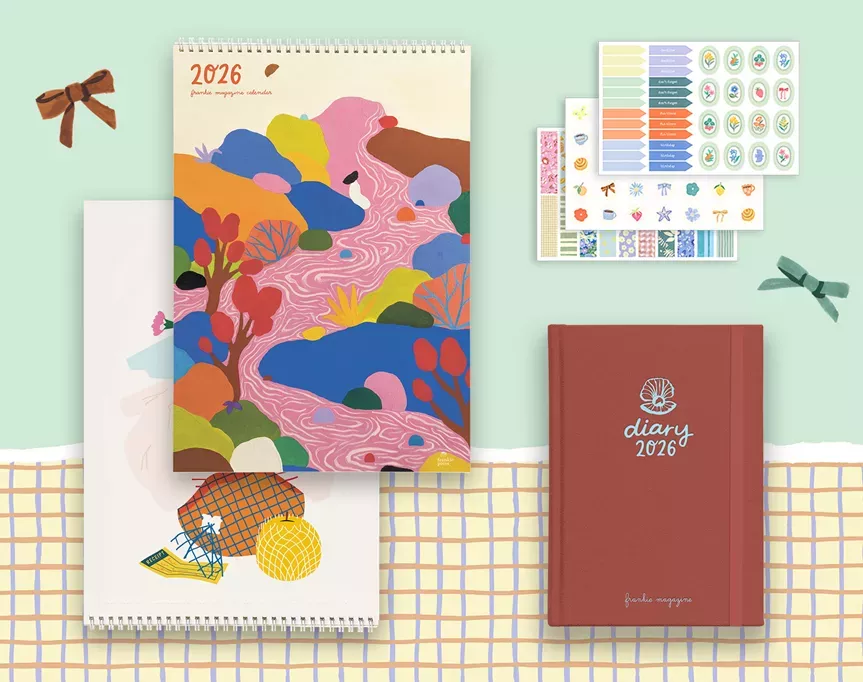indigo roberts is a bladesmith
Indigo Roberts gives us an in-depth look into how she crafts swish knives.
Knife-making came about by chance. I’ve been a fine jeweller for 10 years, but my creative mind always wants to do more. I wanted to develop new skills as a metalworker and had always thought knives were cool – they’re bigger and more badass. But there aren’t many knife-making jobs or apprenticeships around.
Five years ago I met Aidan Mackinnon – a bladesmith and the founder of Cut Throat Knives – at an artist market in South Australia. I was like, “If you ever want to teach someone to make knives, I’d absolutely love to learn.” Nothing ever happened, but we kept in contact over the years. In the end, he contacted me to do a collaboration on a knife, with a more jewellery sort of handle. So I came into Cut Throat Knives, did a knife-making class and loved it. Then at the end, Aidan said, “Do you want to learn to make knives?” I thought he would offer me a day or two a week, but he asked me to come do a full-time traineeship. We really just went into the deep end.
I’d watched shows like Forged in Fire before, but I had no idea how to make a knife. Every day and every step was a learning curve. When you’re a maker, you automatically think you’re going to be pretty good, then the shock comes and you realise it’s a different skill – you need to learn from scratch again. Some of my skills were transferrable. I think I’ve got good fit and finish for a knife, from working with such small parts in jewellery-making. But I had to learn a whole new craft. There’s so much time and labour involved in making just one knife.
A lot of factory-made knives are pumped out really quickly. They’re still good knives, but what we sell at Cut Throat Knives is the process; it’s for people who have an appreciation of the handmade. One person here makes the knife from start to finish – every little part – with love. Hopefully it’s an heirloom you can pass down for 50 years, on to your children. Just don’t put your knife in the dishwasher – it can put little chips in it. I actually gave the first knife I made to my dad. He loves it. He said, “I’m not going to use it! It’s way too special. It’s gone to the pool room.”
You can go super-custom with your knife here, or you can pick from our designs. You can pick everything: blade shape, handle shape, handle material, blade material. Some people come in with crazy ideas, like they might want it to look like a Star Wars lightsaber. We get chefs and people who are into home cooking too, and people buying them as wedding gifts. Then there are collectors who just display them.
After the design stage, we cut out the shape, then heat-treat the steel in the forge. Then we grind the blade from thick to super-thin. The heat treatment makes the blade hard, so that it can hold an edge during grinding. If you were to put an edge on an untreated knife, it wouldn’t hold – it’d be like trying to sharpen steel that’s like butter.
Getting a nice grind on the machine is definitely the hardest part. It’s one of those things you can get shown, and you’ll do it and think you’re doing it right. But it’s not until weeks or months later that you look back and go, “I get it now.” We grind with no jigs – just freehand – so it’s by eye and muscle memory that we can get a sharp, straight edge. When the knife starts getting really thin on the grinder, it’s really easy to burn the metal. It just happens in a second. Most things are fixable, though. I think becoming a good knife-maker is knowing how to fix those mistakes – which I’ve learnt a lot about from teaching classes here).
Knife-making is a pretty physical job – you’re on your feet most of the time. If I’m grinding a full-size chef’s knife, I can normally do five in a day. But after that, I need to go home and sit on the couch. It’s really taxing on your body. Whether you’re standing in front of a forge that’s 800 degrees, or standing in front of the grinder, you have to know your limits. If you feel yourself switch off, you have to walk away, otherwise you’ll make a dangerous mistake.
There’s another process of hand-making knives where you can hand-forge the steel itself, instead of using an existing billet (piece of steel). It’s more for custom work. You’ll hear about a Damascus billet, which is when you cut and stack different kinds of steel, weld it, forge it out, cut it, stack it and forge it again, over and over until there are 400 layers of steel in the billet. Then you’re able to say you made every part of the knife yourself.
I’ve made a lot of knives, and even now, each one I make is just so exciting. I recently made 15 of the exact same knives for a company; getting them spot-on and the same was pretty awesome. My favourite thing is getting to the end of a knife. I get that proud moment of “Wow, I made this,” knowing how much literal blood, sweat and tears goes into each one.
This rad pennant comes straight from the pages of issue 114. To get your mitts on a copy, swing past the frankie shop, subscribe or visit one of our lovely stockists.


.jpg&q=80&h=682&w=863&c=1&s=1)










.jpg&q=80&w=316&c=1&s=1)













.jpg&q=80&w=316&c=1&s=1)










